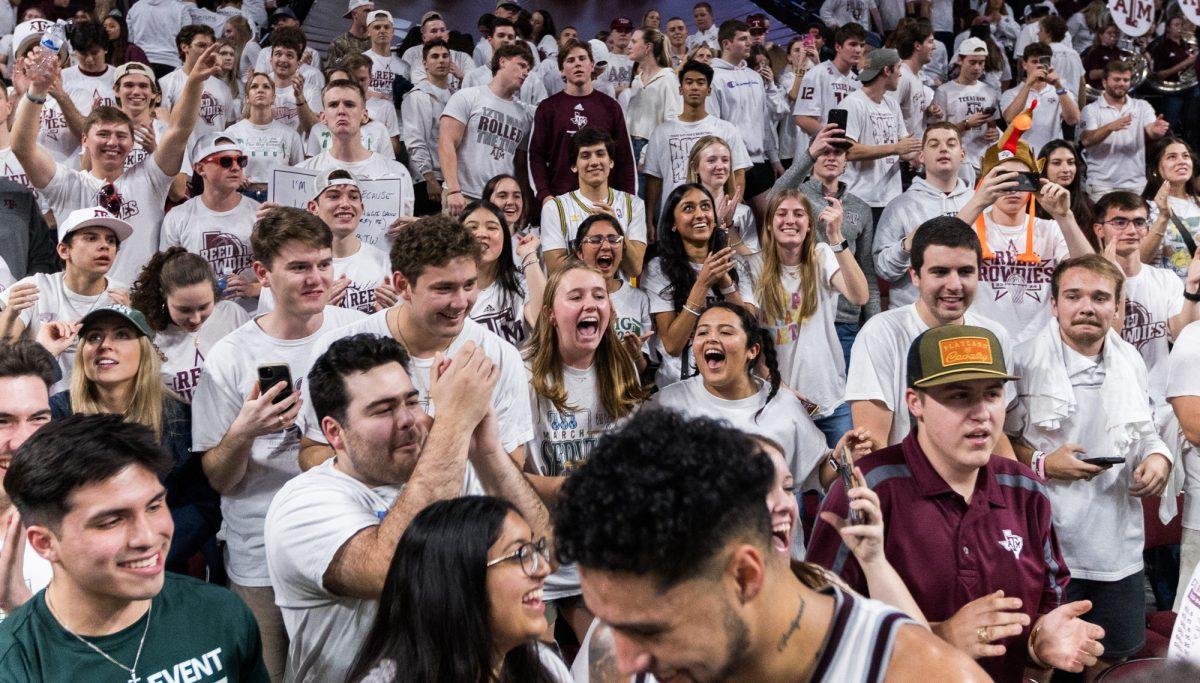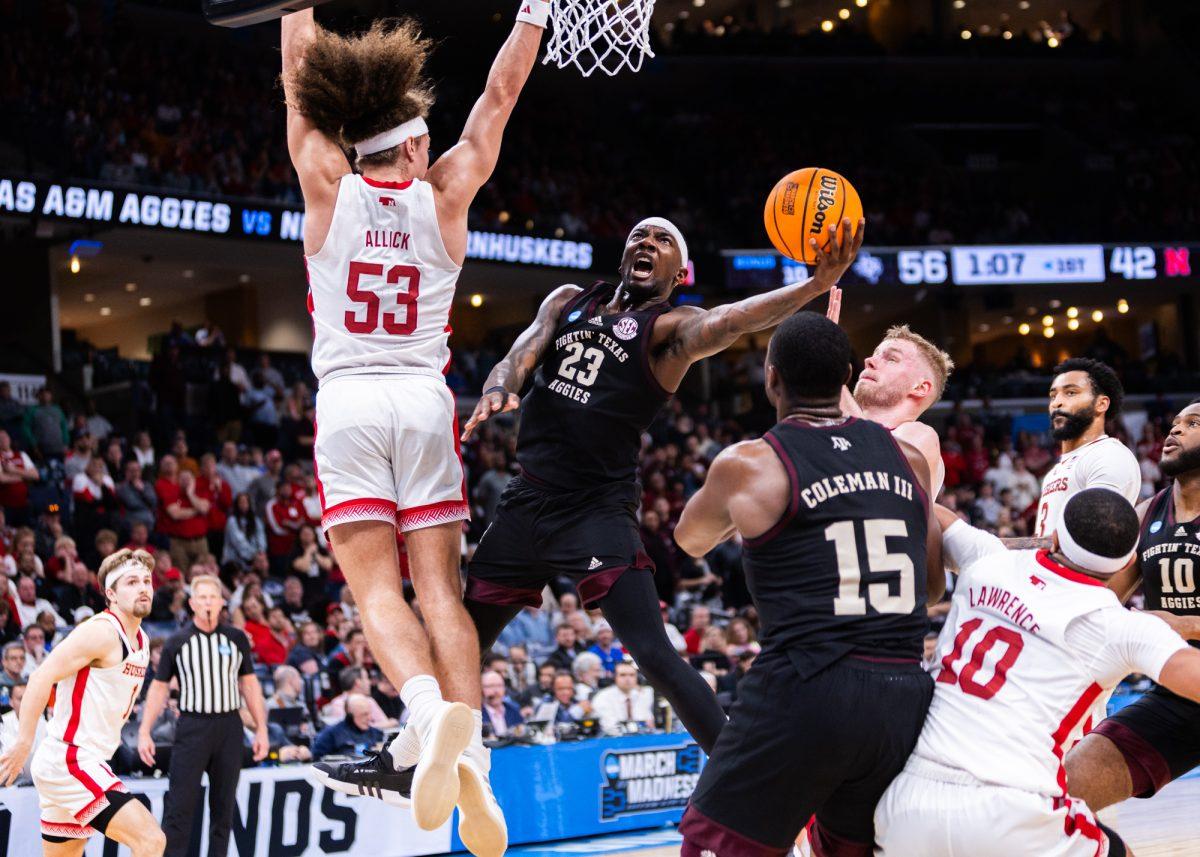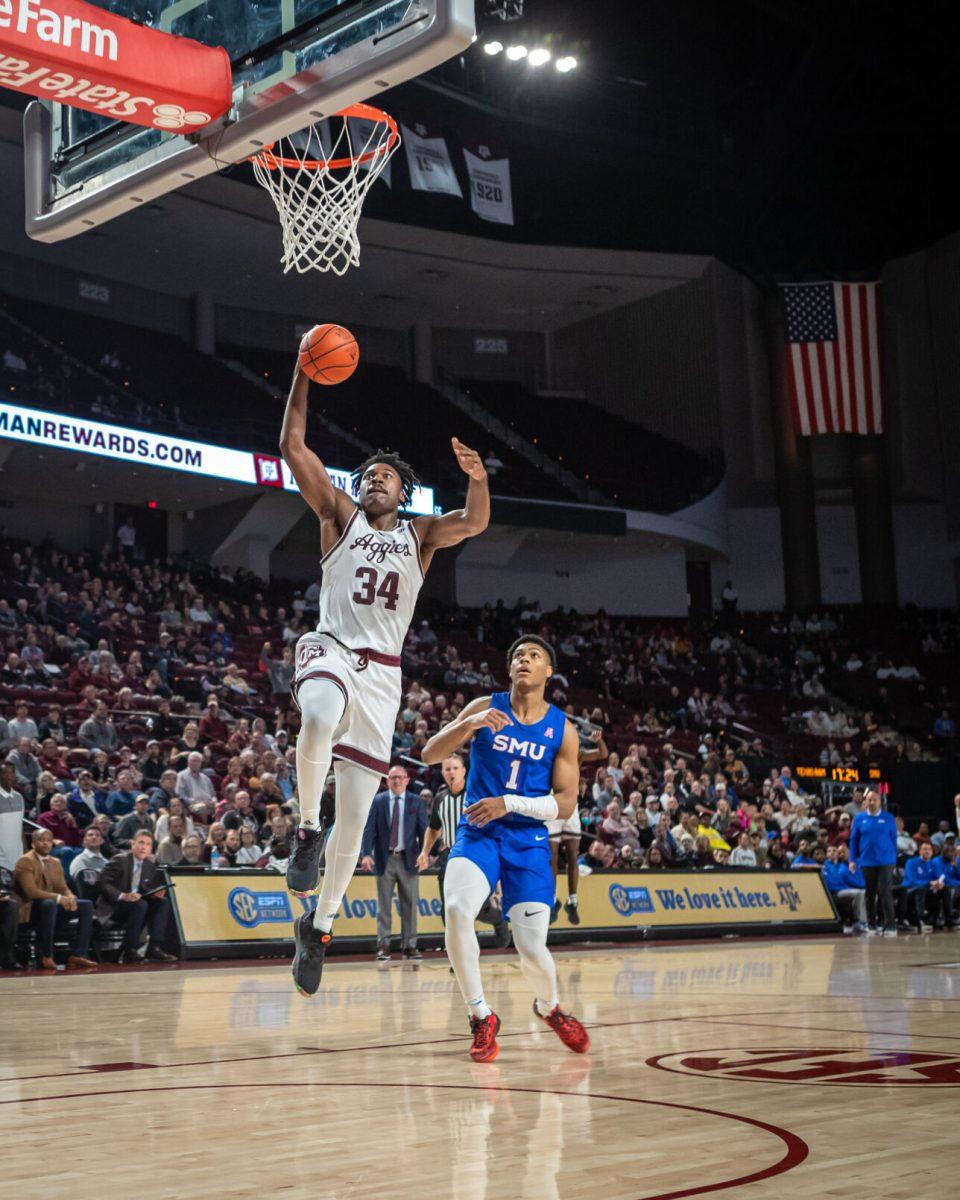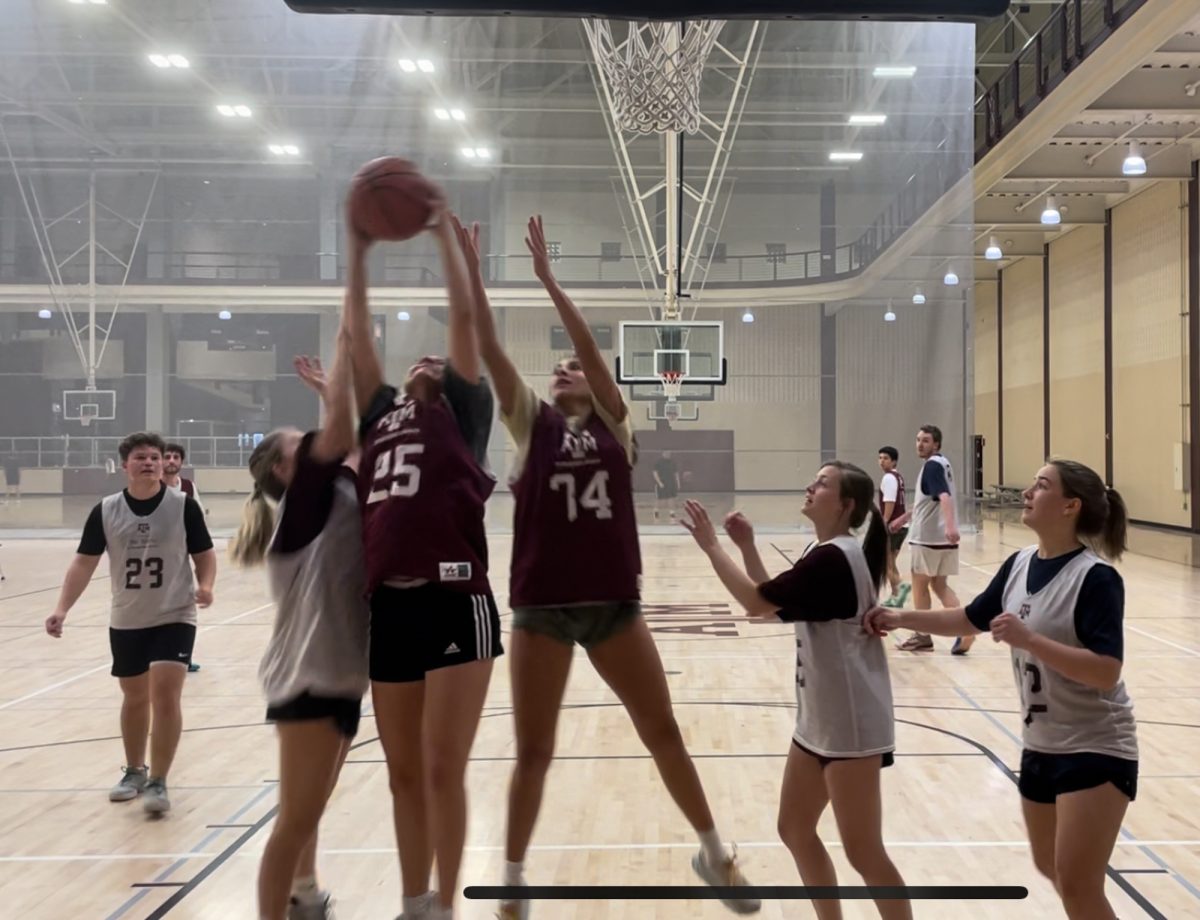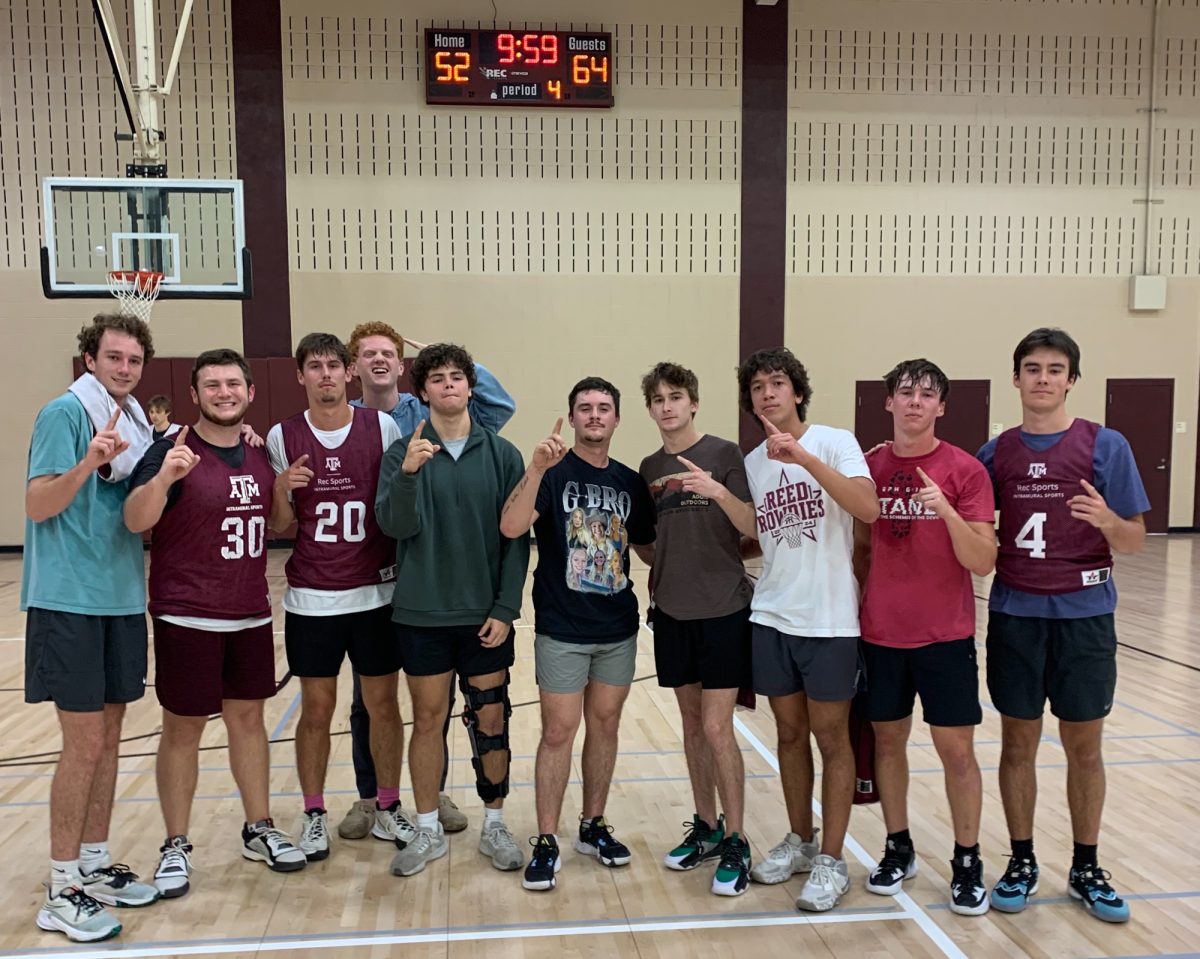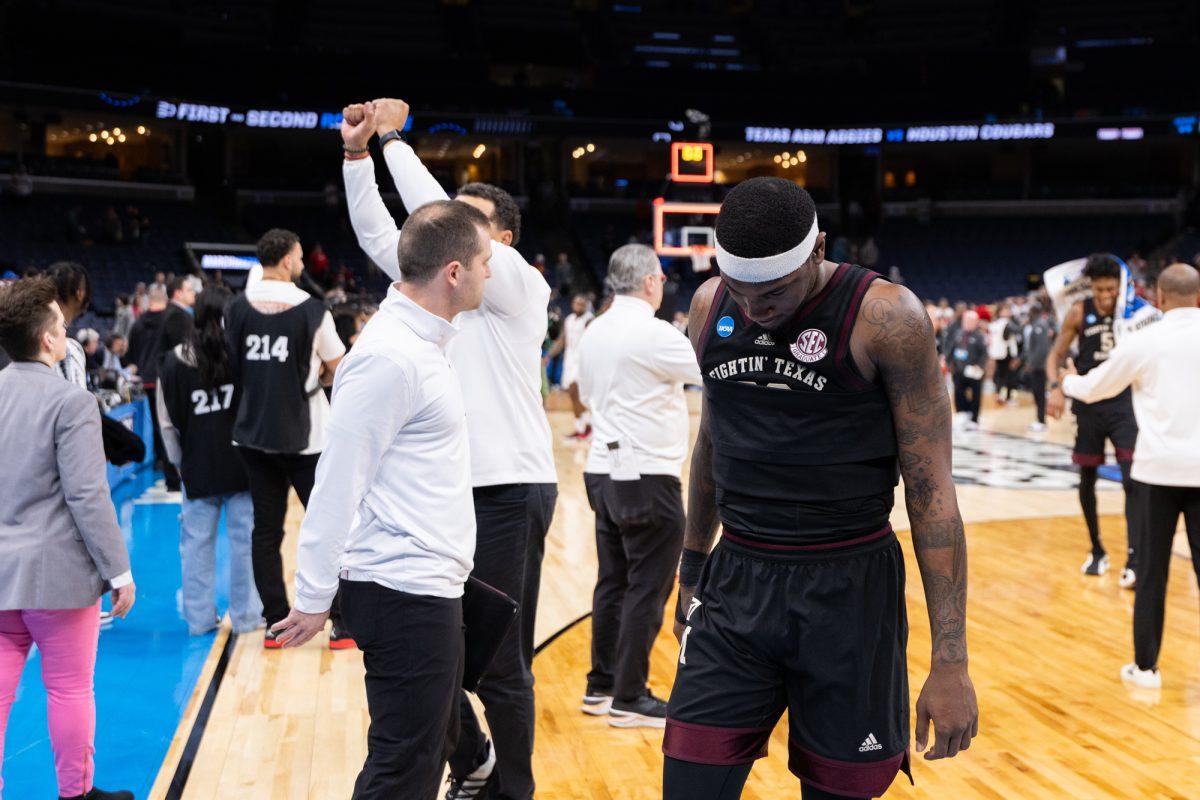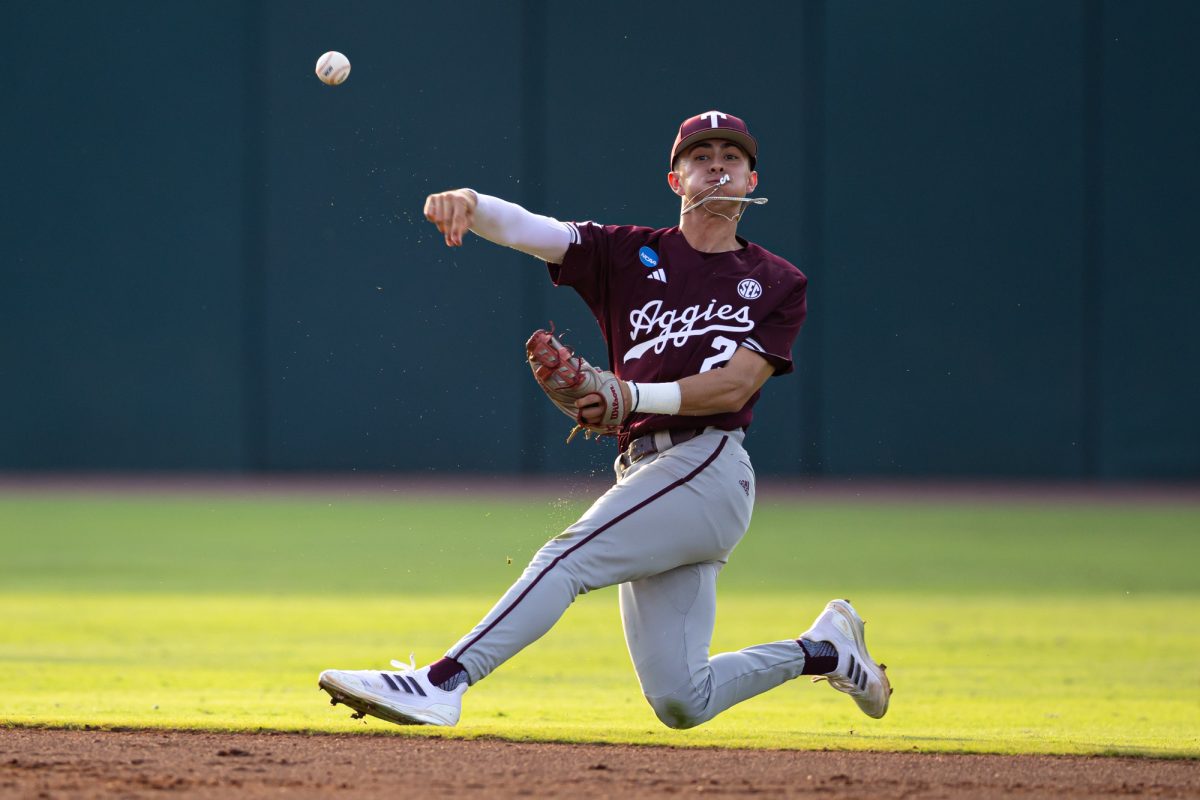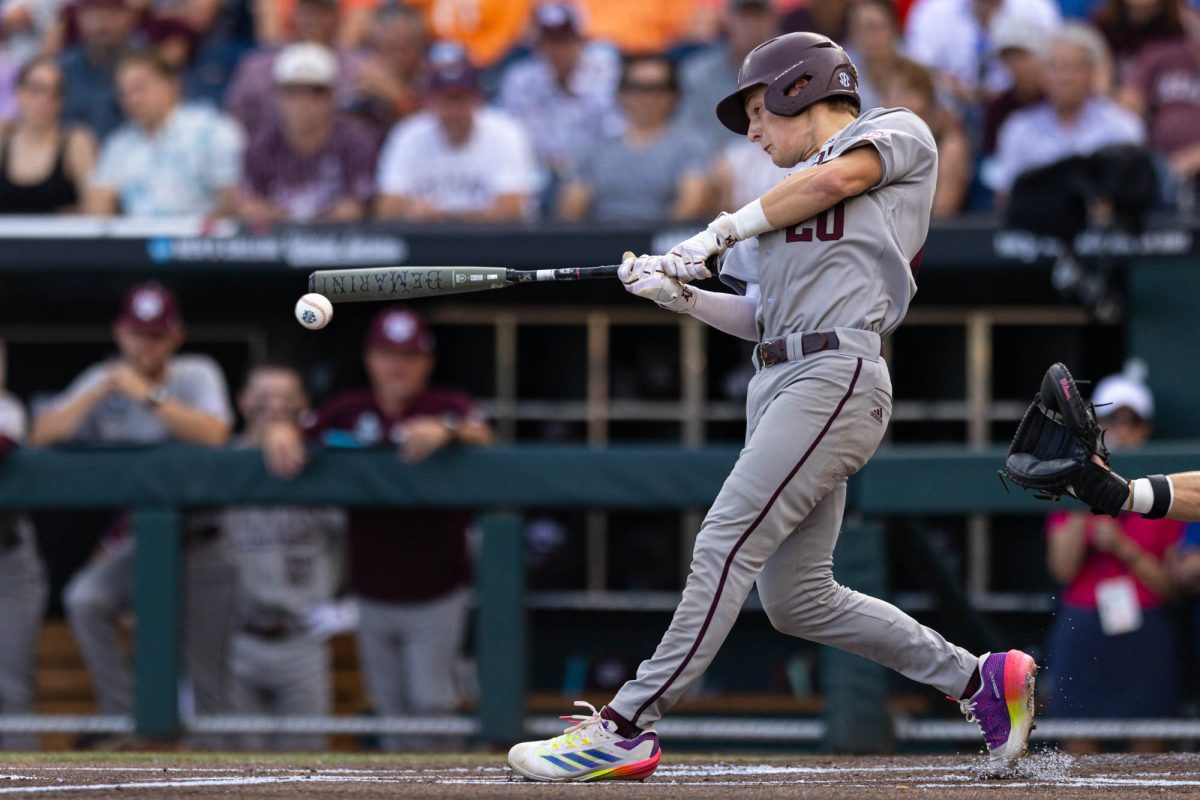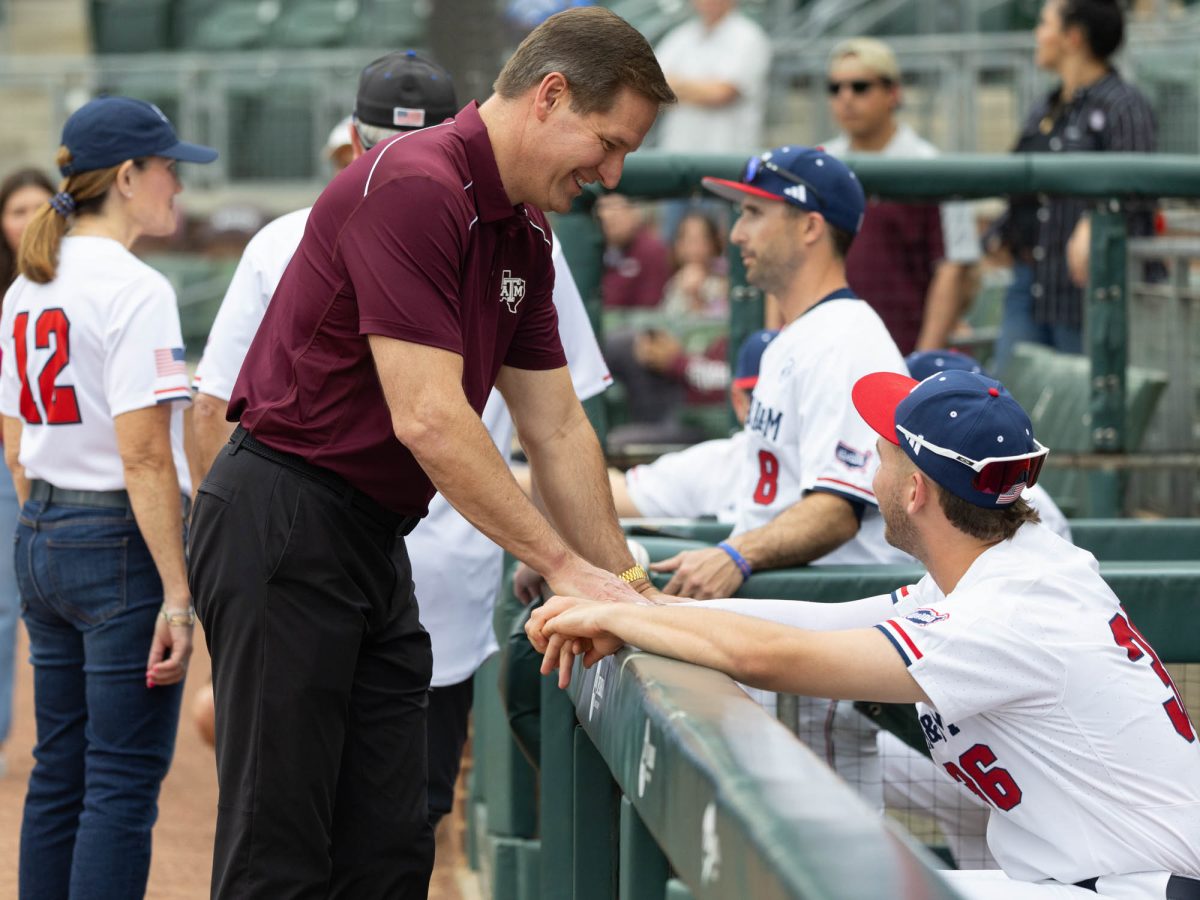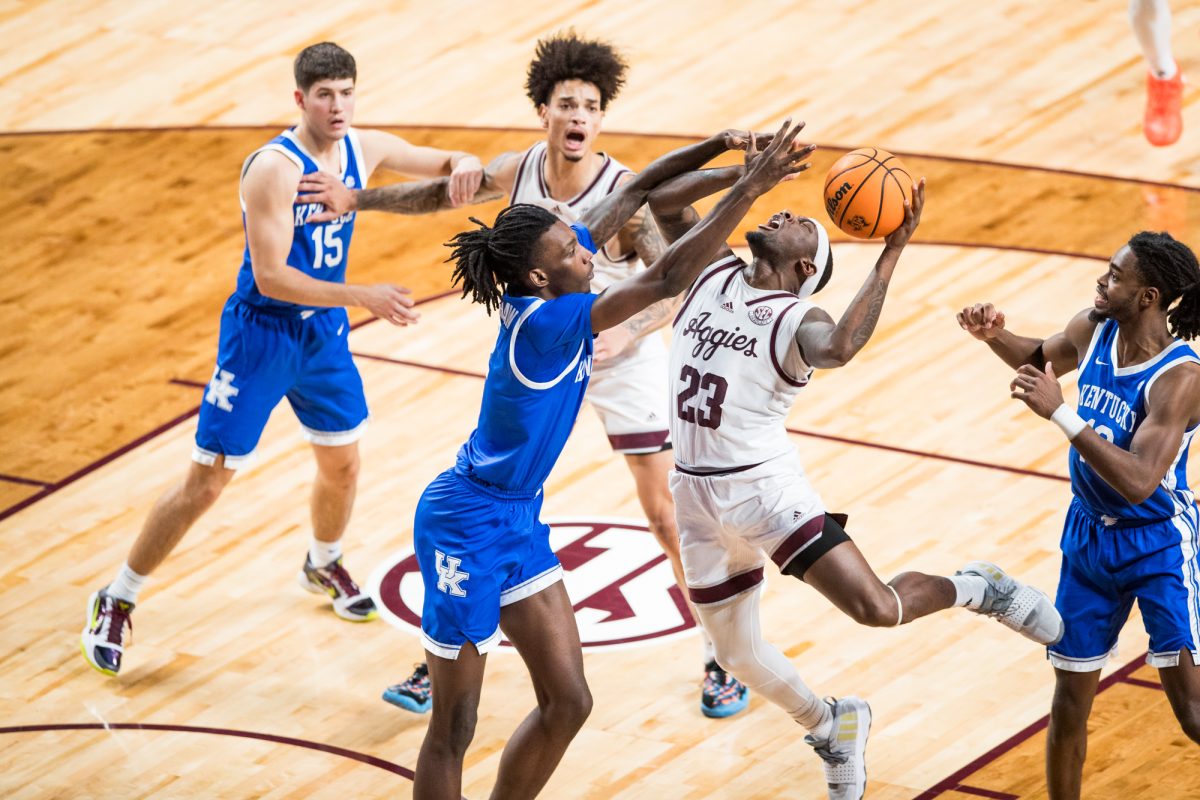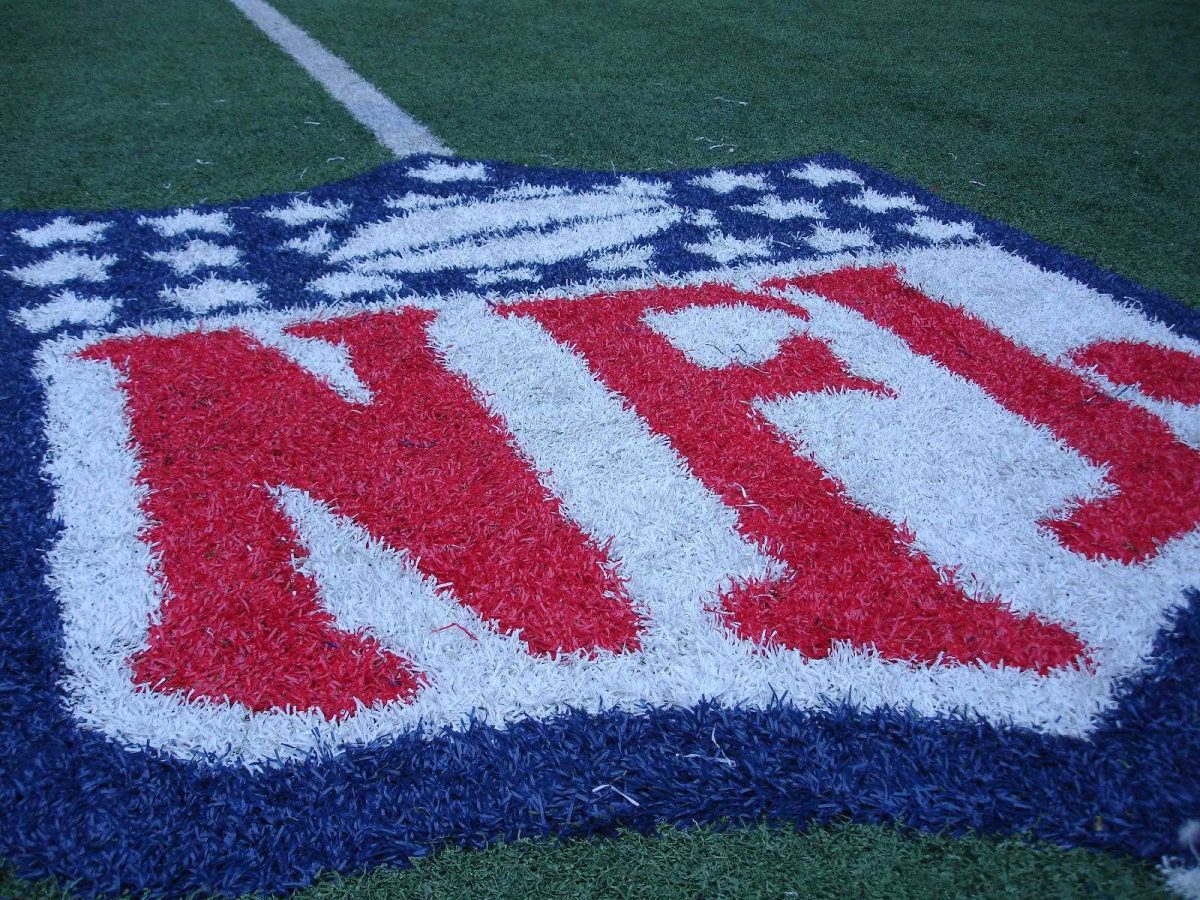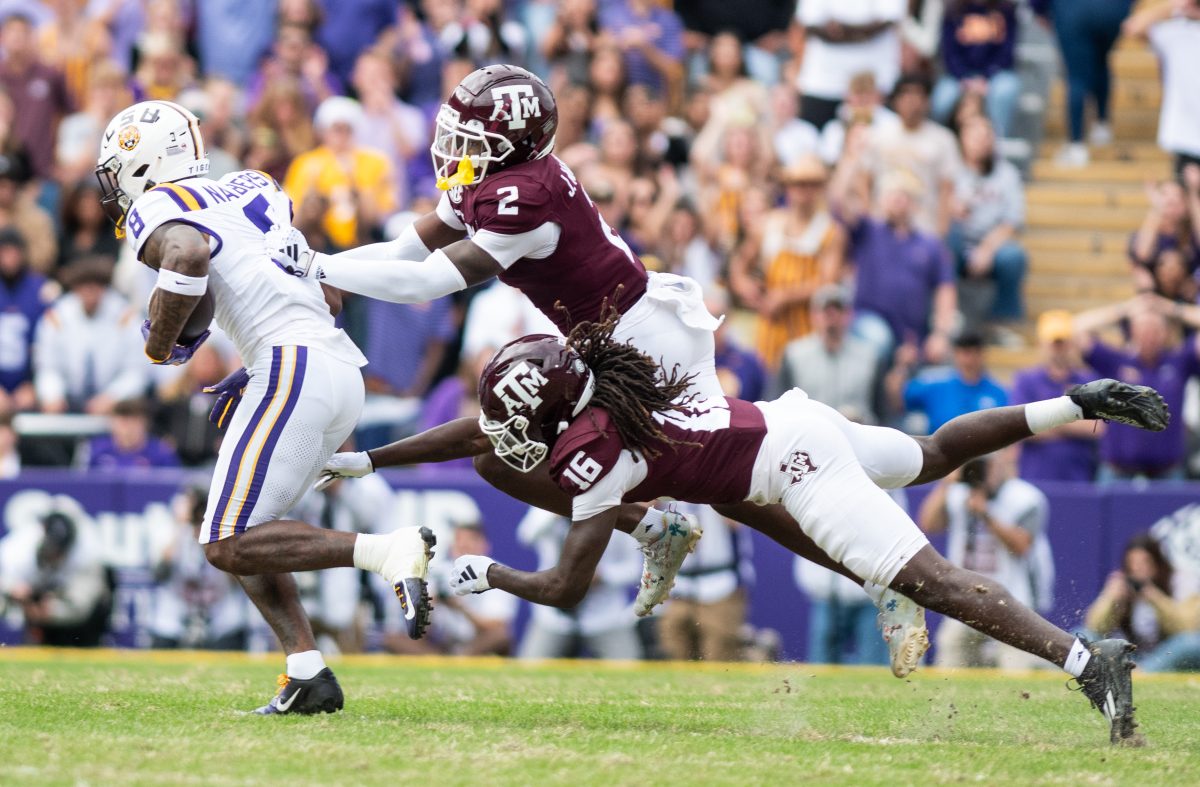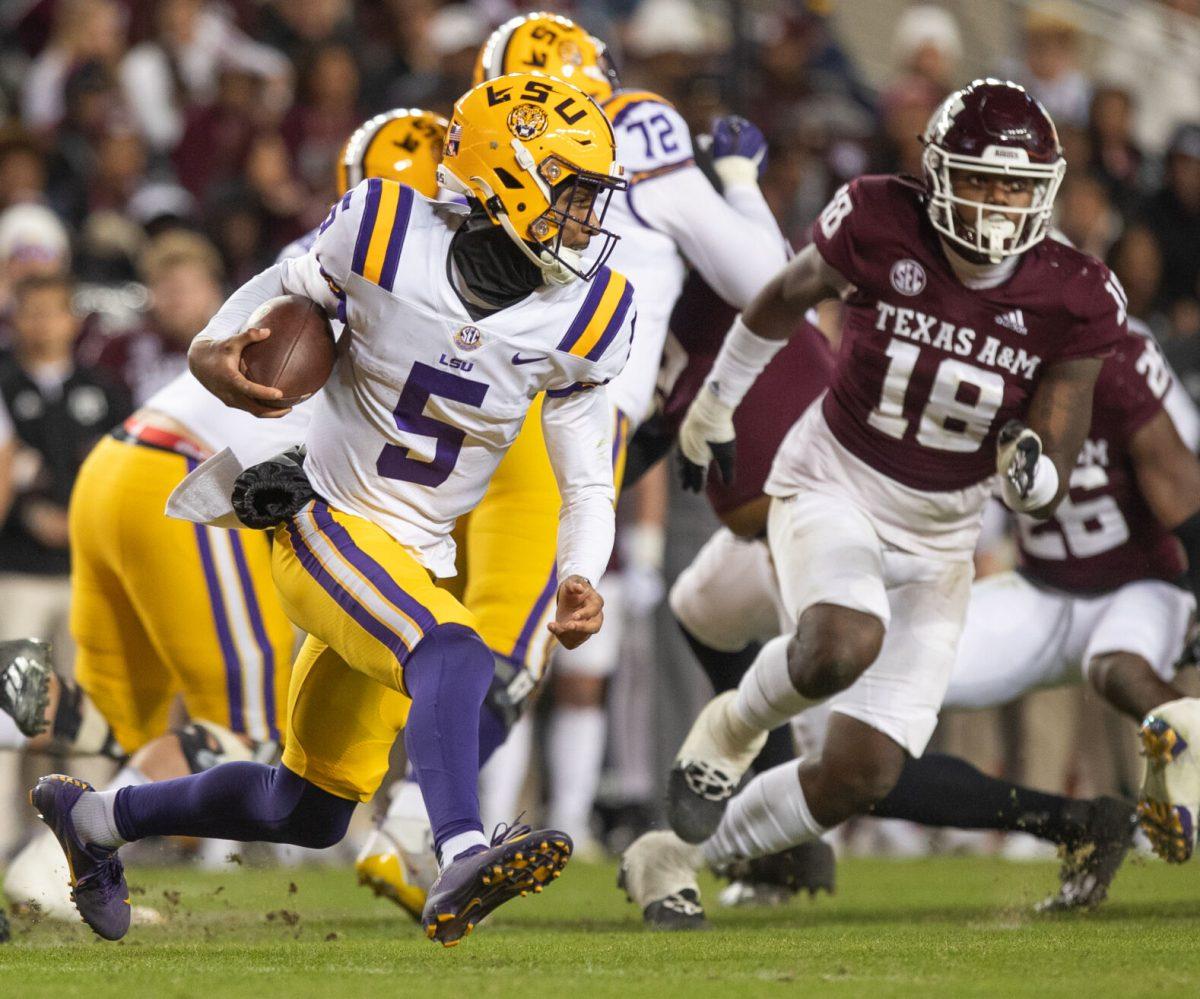.
Court storming is a hazard, not a tradition – Luke White
Traditions are a prime example of what makes college sports so great, and in my opinion, gives them the upper hand over professional sports.
The passion and spirit of college athletics is unmatched, making them a completely different product than what you’ll find at the professional level. You won’t find the pinnacle of sports fandom in urban jungles like Los Angeles, Miami or Atlanta, but rather in college towns such as Baton Rouge, Louisiana, Tuscaloosa, Alabama and College Station.
Winston-Salem, North Carolina found itself in that discussion last weekend, when hometown Wake Forest upset No. 8 Duke in a men’s basketball game on Feb. 24. The win was one of the most significant in program history, and the Demon Deacon faithful acted accordingly with one of the sport’s most time-honored traditions: court storming.
The scene looked like when one steps in an ant mound, as students flooded the court to celebrate the euphoria of the game they witnessed. However, it wasn’t all joy and glee for the Blue Devils’ sophomore center Kyle Filipowski, whose ankle was injured while trying to escape the melee. The team’s staff formed a human wall around him as he was helped back to the locker room.
Filipowski isn’t the only athlete at the top of their sport to risk injury with opposing fans after a court storming this season. Iowa senior guard Caitlin Clark, now the all-time leading scorer in women’s basketball, collided with an Ohio State fan on the court on Jan. 21.
Storming isn’t just limited to basketball courts, but football fields as well. In 2022, a Texas player was shoved from behind by a senseless Texas Tech fan. In 2023, a video surfaced of a Kansas supporter directly taunting an Oklahoma player in his face.
These negative instances have given rise to a debate that I’ll let Duke coach Jon Scheyer explain.
“When are we going to ban court storming?” Scheyer posed. “It’s a dangerous thing.”
Court storming embodies college spirit, but it comes at a cost to those that actually belong on the court: players, coaches and staff. While it may be fun for the fans sprinting onto the playing area, it represents a hazard to those trying to get off of it.
These aren’t normal crowds we’re talking about, either. Imagine a court storming like Wake Forest’s, where, after witnessing an intense back-and-forth contest, fans flood the floor. They’re pumped full of adrenaline, and common sense may not take priority over the excitement of joining the crowd.
While rushing the court not only presents the risk of accidental harm to others, such as colliding or running into others, it allows those in the crowd to release aggression on opposing players and staff members. Regardless of the intent behind Filipowski’s injury, it could have been prevented by keeping fans where they belong: in their seats.
“I’ve already heard that there [are] some videos of [me] getting punched in the back, so I absolutely feel like it was personal, intentional for sure,” Filipwoski said. “There’s no reason why they see a big guy like me trying to work my way off the court and can’t work their way around me. There’s no excuse for that.”
So, how to go about preventing court storms? The simple solution seems to be an added security and law enforcement presence at high-profile games. I’ve seen it firsthand at Reed Arena, where a line of security formed around the perimeter of the court following wins over No. 2 Alabama in 2023 and No. 6 Kentucky this year.
The safety of those involved in the game ought to be paramount, and part of that is keeping opposing teams separated from fans. So, why not bring the home team to its fans, rather than vice versa? Give players the opportunity to celebrate in the student section with those that believed in them to pull out the win.
Only in college athletics are fans able to run on the playing surface postgame and not be put in handcuffs. Run on the court following a Warriors-Lakers NBA game and let me know how that works out for you.
Those rules are in place for a reason, and it’s to maintain the safety of the players. Fans are unpredictable, and when people are at risk, court storming is no longer a tradition, but a hazard.
Oh, and get off my lawn.



